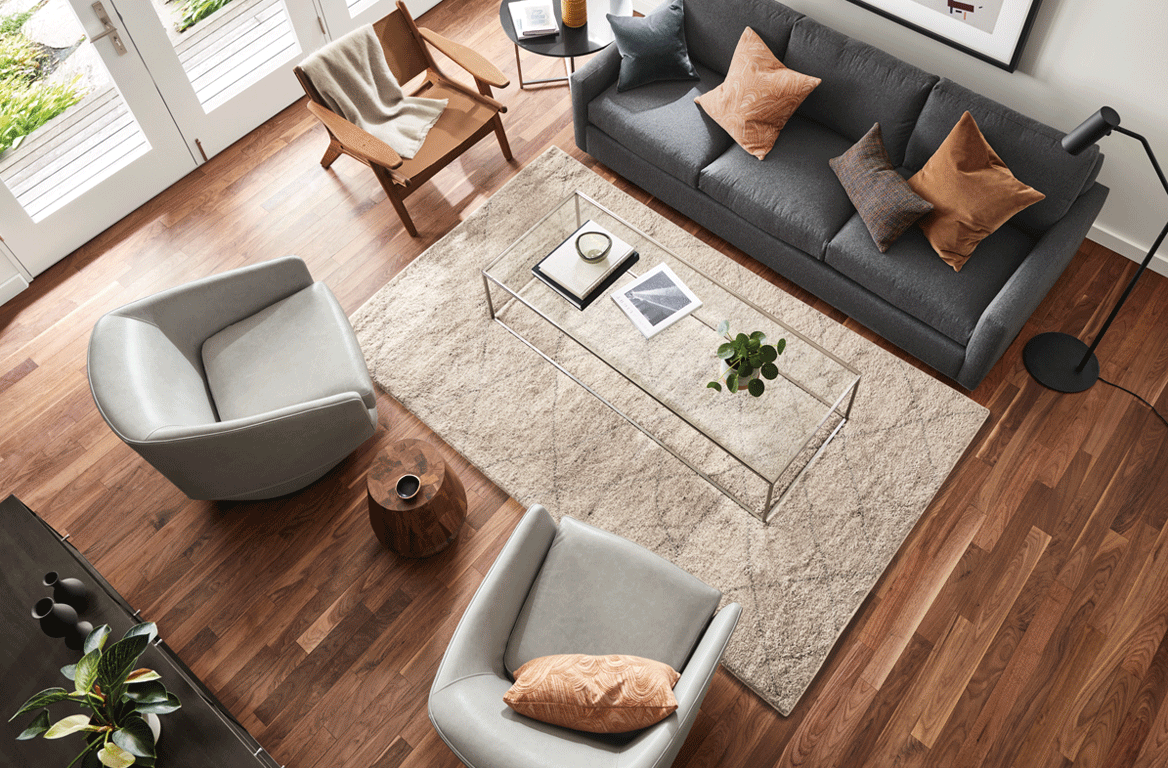Introduction
Having the correct size rug is essential to your room feeling balanced and inviting. A perfectly-chosen rug can delineate spaces, infuse them with warmth and pull an entire scheme together. But pick the wrong scale and the balance and flow will be disturbed. Here’s a primer to help you figure out the best size rug for your living room.
Understand the Role of a Rug
Before we get to the measurements, think about the role the rug is going to play. Is it designed to ground the seating area, introduce a pop of color, or add comfort underfoot? Know what it’s meant for and it will help you choose what fits and enhances the design of the room.
Measure the Room and Furniture
Begin by measuring out the living room and the furniture arrangement. The dimensions are also helpful in calculating how much floor space to cover. Remember where seating and tables are, that will directly affect what size rug you’ll need.
Standard Rug Sizes and Where to Use Them
Some standard rug sizes are a good fit for most living rooms. Learning these can help you decide:
5×8 Feet: Perfect for smaller spaces or to jazz up a coffee table. Commonly used when furniture is against the wall, leaving only the front legs of the furniture on the rug.
8×10 Feet: An ideal size for living rooms and dining rooms. Most furniture can be used with it due to it’s large size and the front legs should be placed on the rug to create a cohesive design.
9×12FT: With larger sitting areas to accommodate all furniture leg on the rug. This is what determines the size area, it will be bound together.
Consider Room Layout
The way you position your rug will depend on the room layout.
Open Space: A larger rug would make a beautiful focal point to define the space in a large area and to separate it from the dinning area or kitchen area.
Traditional arrangement: If your room is set up traditionally, make sure your rug extends under the front legs of furniture surrounding the coffee table.
Leave Space Around the Rug
Try to leave some of the floor exposed around the rug’s parameters. As a general rule of thumb, you want 12 to 18 inches of exposed flooring between the rug’s edges and the room’s walls. This forms border which which completes rug and makes it look larger.
Match Rug Shape to Room Shape
Though rectangular is the norm, keep the shape of the room in mind. Square rugs or round rugs can work by squaring off the room or juxtaposing a round table with a rectangular rug. By matching the rug shape to the room shape you are able to create a feeling of serenity and balance.
Coordinate with Furniture
Make sure the rugs match the style and color of the furniture. Ideally a rug should complement the overall look without dominating the existing décor. Look for patterns and colors that match your upholstery and other decor in the room.
Consider Traffic and Function
Consider the flow of traffic through the room, and the way the room is used. Durable materials and darker colors can also work well in high-traffic spots to help keep the rug looking its best. If comfort is what you’re after, go for something with materials that are softer and more plush.
Experiment with Placement
Try not to get stuck on placement of rugs. Slight adjustments to the rug (or even flipping it around) can occasionally alter the room’s dynamic. Step back and visualize how changing configuration will affect the space.
Conclusion
Selecting the Appropriate Rug Size for a Living Room How to pick the best rug size for our space In the living room the rug should be a foundational element for the entire space. Keeping the room’s demands in mind and following the directions above, everybody can determine a rug that’s the best for their living room space. A good rug not only provides style and comfort, but it also connects the room, making it feel welcoming and cohesive. With the right choice of rug, a living room can jump from good to great in less time than it takes you to select that perfect piece of art you’ve been eyeing.
